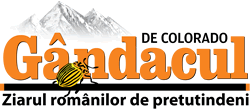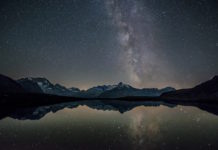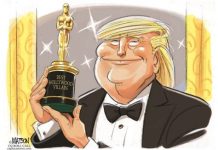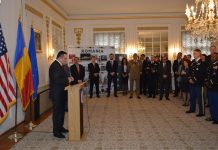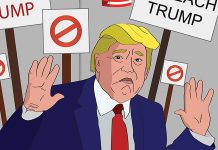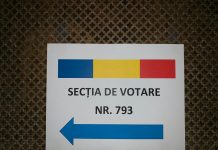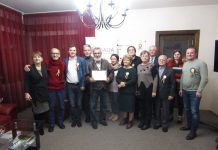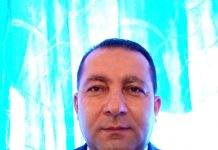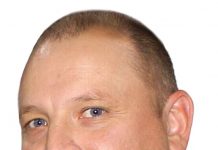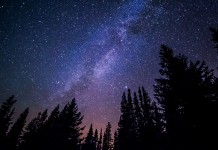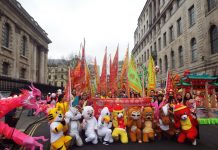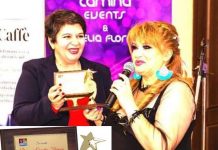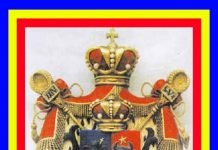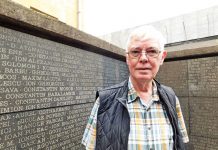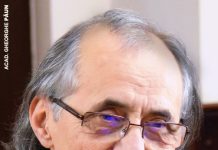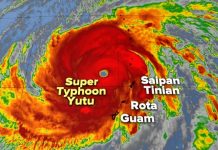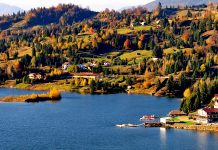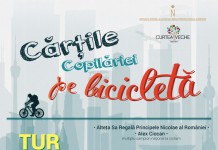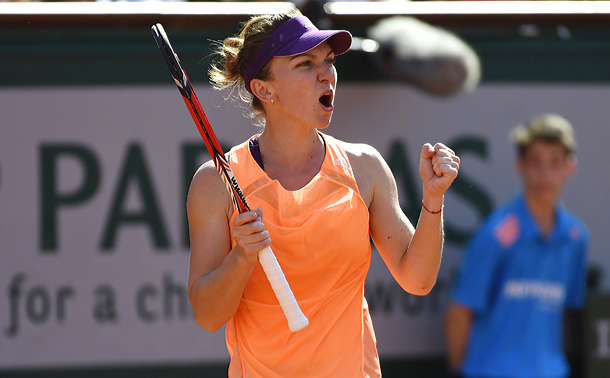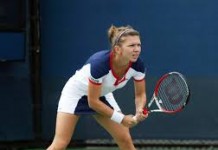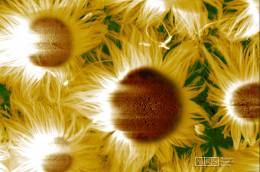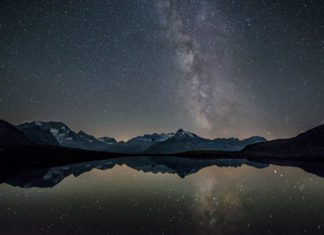 NanoArt could be for the 21st Century as Photography was for the 20th Century. We live in a new Renaissance period. NanoArt is the expression of the New Technological Revolution and reflects the transition from Science to Art using Technology. Artists should familiarize the general public with the nanouniverse, so people will focus on the positive effects and redirect the negative ones so they may benefit from them. In my opinion, NanoArt was born once the electron microscope became commercial, in the late 1930’s. Conscious or non-conscious, NanoArt works were created since the early times of electron microscopy. NanoArt is a new art discipline at the art-science-technology intersections. It features nanolandscapes (molecular and atomic landscapes which are natural structures of matter at molecular and atomic scales) and nanosculptures (structures created by scientists and artists by manipulating matter at molecular and atomic scales using chemical and physical processes). These structures are visualized with powerful research tools such as scanning electron and atomic force microscopes, and their scientific images are captured and further processed by using different artistic techniques to convert them into artworks showcased for large audiences. I was always interested in nanotechnology as a cutting edge technology capable of changing our lives. I am fascinated by the structure of matter at small scale, and combining my art and science backgrounds I began to develop my NanoArt process about 30 years ago. My artistic-scientific-technological process starts in a laboratory where I create different structures through the means of physics and chemistry. I called these Nanosculptures. Basically I make sculptures at molecular and atomic levels. For my artworks, I also use natural structures of different materials, I call these Nanolandscapes. The next steps in my process are structure visualization and image capture. To accomplish these steps, I am using a Scanning Electron Microscope interfaced with a computer. Some of the captured images are painted and manipulated digitally, combining the realistic images of these structures with abstract colors. To paint them I developed in Photoshop a technique I called it “Digital Faux”. Faux painting is a very old technique used by decorative painters to recreate the look and feel of many types of natural materials. Faux finishes use glazes instead of paint. The difference is paint is opaque and glaze is translucent. By layering glazes one can produce more 3-dimensional effects then with paint. Like traditional faux, Digital Faux is done by overlaying translucent layers of color to create the perception of depth, volume, and form. This is what I called “Digital Glazes” and I obtain them in Photoshop by adjusting the opacity of different colors. The final step of my process is printing. I print my works on canvas or fine art paper with long-lasting inks using the Epson process. This way, my artworks could be showcased for large audiences to educate the public with creative images that are appealing and acceptable.
NanoArt could be for the 21st Century as Photography was for the 20th Century. We live in a new Renaissance period. NanoArt is the expression of the New Technological Revolution and reflects the transition from Science to Art using Technology. Artists should familiarize the general public with the nanouniverse, so people will focus on the positive effects and redirect the negative ones so they may benefit from them. In my opinion, NanoArt was born once the electron microscope became commercial, in the late 1930’s. Conscious or non-conscious, NanoArt works were created since the early times of electron microscopy. NanoArt is a new art discipline at the art-science-technology intersections. It features nanolandscapes (molecular and atomic landscapes which are natural structures of matter at molecular and atomic scales) and nanosculptures (structures created by scientists and artists by manipulating matter at molecular and atomic scales using chemical and physical processes). These structures are visualized with powerful research tools such as scanning electron and atomic force microscopes, and their scientific images are captured and further processed by using different artistic techniques to convert them into artworks showcased for large audiences. I was always interested in nanotechnology as a cutting edge technology capable of changing our lives. I am fascinated by the structure of matter at small scale, and combining my art and science backgrounds I began to develop my NanoArt process about 30 years ago. My artistic-scientific-technological process starts in a laboratory where I create different structures through the means of physics and chemistry. I called these Nanosculptures. Basically I make sculptures at molecular and atomic levels. For my artworks, I also use natural structures of different materials, I call these Nanolandscapes. The next steps in my process are structure visualization and image capture. To accomplish these steps, I am using a Scanning Electron Microscope interfaced with a computer. Some of the captured images are painted and manipulated digitally, combining the realistic images of these structures with abstract colors. To paint them I developed in Photoshop a technique I called it “Digital Faux”. Faux painting is a very old technique used by decorative painters to recreate the look and feel of many types of natural materials. Faux finishes use glazes instead of paint. The difference is paint is opaque and glaze is translucent. By layering glazes one can produce more 3-dimensional effects then with paint. Like traditional faux, Digital Faux is done by overlaying translucent layers of color to create the perception of depth, volume, and form. This is what I called “Digital Glazes” and I obtain them in Photoshop by adjusting the opacity of different colors. The final step of my process is printing. I print my works on canvas or fine art paper with long-lasting inks using the Epson process. This way, my artworks could be showcased for large audiences to educate the public with creative images that are appealing and acceptable.
Scientists are exploring the nanoworld hoping to find a better future. There is evidence that Nanotechnology might be the answer. Like any new technology, Nanotechnology can have positive or negative effects on the environment and society. In my research, I am trying to minimize the risks of experimenting with nanomaterials. I do my experiments exclusively inside glove boxes. No experiments are done in a regular lab environment. In spite of being very attractive for a lot of applications due to their unusual characteristics, the effects of working with nanomaterials are very little known. So, it’s safer if we take a lot of precautions while experimenting with these new materials. There are legitimate health and environmental concerns about nano products, and I hope most of the nanotech companies are willing to develop their products responsibly. We should not make any nanotechnology developments in nano weaponry. These are the most dangerous weapons of mass-destruction ever invented. Unfortunately, I am sure that there has been a lot of work done and a great deal of progress made in this direction. A world full of this kind of arsenal is a much uglier picture than the present nuclear world. However, that’s the reason people should know about these developments, so they are given the opportunity to oppose them. NanoArt plays an important role here in educating the general public. That’s why artists and scientists should intensify their efforts to raise the awareness of the public at large. In the US, attempts to coordinate federal work on the nanoscale began in November 1996. In 2001, Clinton administration raised nanoscale science and technology to the level of a federal initiative, officially referring to it as the National Nanotechnology Initiative (NNI). The responsible development and application of nanotechnology could lead to create jobs and economic growth, to enhance national security, and to improve the quality of life. Some of the benefits would be cleaner manufacturing processes, stronger and lighter building materials, smaller and faster computers, and more powerful ways to detect and treat diseases. Research and Development focuses on practical applications, such as energy, homeland security, healthcare, food and agriculture, the environment, new materials, and electronics. I would strongly suggest everyone to stay in touch with nanotech since this is going to be the top technology for the next few decades, in my opinion. The NanoArt movement is alive and is catching up quickly. When I started to organize the international online competition, there were not many similar projects. Now, after a few years, there are a lot of NanoArt contests organized by Universities and scientific societies. Also, at the 4th edition of the international online competition organized by NanoArt21 (http:// nanoart21.org), 48 artists from 15 countries submitted 154 works vs. 71 artworks submitted by 22 artists from 5 countries in 2006 at the 1st edition of the competition. On top of this, the quality of the works improved a lot showing a better understanding of this new art discipline. I funded the NanoArt21 organization several years ago as a worldwide organization to educate people and promote this new art discipline and movement. After a few years, I can honestly say we have a very active and rapidly expanding international group of artists with huge interest in nanotechnology and nanoscience. We organize the International Online Competition each year, and also the International Festival of NanoArt in brick-and-mortar galleries all over the world. This year we’ve been invited in San Sebastian, Spain, where I am planning to organize the 3rd edition of the festival. The first 2 editions were hosted in Kotka, Finland, and Stuttgart, Germany. My vision on the NanoArt21 foundation is an organization where artists and scientists from all over the world will be offered residencies to collaborate and create NanoArt works and projects in studio-labs, and then have their works exhibited in worldwide galleries and museums. Recently, I launched a new blog about Nanotechnology and Art (http:// nanoart21.org/blog), where I am planning to start a history of NanoArt, and explore in depth the art-science-technology interactions. Artists, scientists, and anyone interested to contribute to the topic are invited to submit articles.
